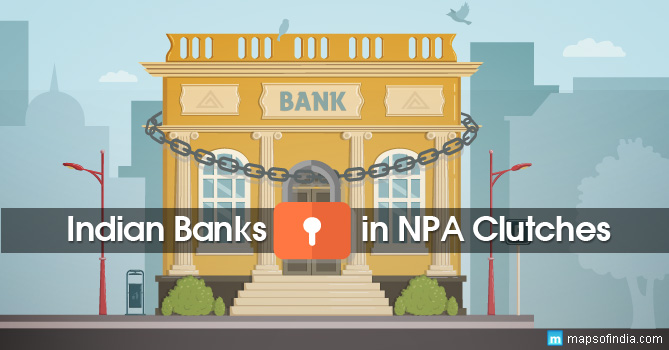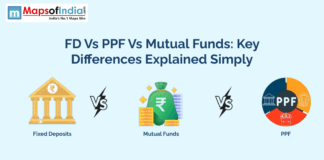NPA – Non-performing asset.
Till about 4 or 5 years ago, not many outside the banking and finance industry had a clear understanding of the meaning of NPA. At the very least, it did not feature in the lexicon of the ordinary man. Thanks to Vijay Mallya and the Kingfisher default fiasco, this changed rather quickly. A NPA, in simple terms is a loan that is under jeopardy of default; that is, the borrower has failed to make any payment – repayment of principal and interest payment – for a period of 90 days or more.
Mallya owed his lenders a sum of about INR 7,000 crore, but the total reserve price of his pledged assets (at an auction) did not seem to exceed INR 65 lakhs. By the time the State Bank of India finally decided to declare Mallya and his two companies “wilful defaulters”, the NPA nightmare had been already going on for some 4-5 years.
After this incident (or string of incidents) every Indian is now asking the question: “What is my bank’s NPA?” And these are mere depositors. Shareholders have started to sit up and take notice.
Bad Debt Booms
Earlier this year, in February 2016, The Indian Express had filed an RTI query and the revelation that the response by the Reserve Bank of India threw up was a shocking and unnerving one. According to India’s central bank, between the years 2013 and 2015, a total amount of INR 1.14 lakh crore had been written off as bad debt or debt that cannot be recovered. This figure comes from 29 state-owned banks and does not include the NPAs of banks that are privately owned.
The RBI’s response to the RTI query also revealed that bad debts for Indian banks rose from INR 15,551 crore (as of 31 March, 2012) to INR 52,542 crore (as on 31 March, 2015). This is more than a threefold rise. The top banks that have written off bad debts in 2015 were –
- State Bank of India – INR 21,313 crore
- Punjab National Bank – INR 6,587 crore
- Indian Overseas Bank – INR 3,131 crore
In February 2016, Gabrielle Parussinni said in The Wall Street Journal, “By several key measures, banks in Asia’s third-largest economy are suffering. Bad loan ratios are high while profitability and capital ratios are low compared to other banks in Asia.”
Quoting from an IMF report, he also said that non-performing assets made up over 5.9 percent of the total loans lent by banks in the country. This is almost twice the NPA ratio of the country which ranks next – Thailand. NPAs are well on their way to becoming the greatest concern of the banking sector in an otherwise rapidly expanding economy.
Eroding Bank Profits And Share Value
How are NPAs and bad loans affecting banks and the public funds?
Non-performing assets are eating into the profitability of banks. According to news reports, booming bad loans are affecting the quarterly reports of PSU banks in India in a big way. In February 2016, state-run banks such as the Bank of India, the Bank of Baroda and IDBI reported their greatest quarterly losses through history. The total loss reported by banks for Q3 of FY 2015-16 stood at about INR 12,000 crore.
Profit making banks such as State Bank of India and Punjab National Bank also saw a sharp fall in their profits. In the final quarter of Fy 2015-16, the 20 public sector banks together reported a loss of INR 14,283 crore, due in large measure to NPAs. NPAs and bad loans are a major concern for state-owned banks, but are also starting to affect the performance of private banks in the country.
Axis Bank, one of the country’s largest private banks, reported a drop in its net profit figures by about 83 percent for the second quarter (July to September) of FY 2016-17. Axis reported a profit of INR 319 crore vis-a-vis a profit of INR 1,916 crore for the same quarter the previous year.
The losses reported by these banks due to NPAs and bad loans reflect on their profitability and eroding shareholder value. SBI, India’s largest state-owned bank closed on October 26, 2016, with a share value of INR 258.75, a considerable down slide from the closing value of INR 320.30 on 15 January, 2015. The bank has seen a 52-week low of INR 148.30. Other Indian banks’ shares tell a similar story.
87 Owe INR 85,000 crore
The seriousness of the NPA issue may be understood by the recent revelation that 87 individuals in India owe the public sector banks a whooping INR 85,000 crore. Earlier this month, the Chief Justice of India, T S Thakur was handed a sealed envelope by the country’s central bank, the RBI.
This envelope contained names of the largest loan defaulters in the country. The Chief Justice went on to reveal that mere 87 people held the biggest bad loans – a grand sum of INR 85,000 crore. Even as the RBI did not seem inclined to reveal the names of the defaulters, the Chief Justice of the Supreme Court reprimanded the bank asking it to work in the interest of the country, not other banks.
Cleaning Up The Balance Sheets
Former RBI chief Raghuram Rajan initiated the process of NPA clean up in India’s public sector banks. He had said that a “deep surgery” would be required and a complete clean up was necessary, before the banks of the country could go ahead on a growth trajectory.
The RBI has initiated a number of measures that shall not only identify repeated defaulters but also prevent the riskier loans from being approved. For now, Indian banks are still caught up in the eye of the NPA storm and it is only a collective effort of the government, the RBI, and the banks themselves that shall restore any semblance of healing and growth.
Read More…
Airtel Launches Payments Bank; Is it a Big Deal?
SBI Writes-Off Defaulters’ Loans from Balance Sheet






